Most of us have probably heard "Are you flossing enough?" a time or two from our dentists, followed by a long monologue about how important it is for our dental health. It’s like a blast back to those childhood years when a parent wasn’t mad, they were just disappointed at your choices. Sometimes life gets busy and we forget about our dental routines! Luckily, one recent advancement in technology was designed to make our lives a little easier. We’re talking about that trusty water flosser and the long list of benefits that accompany its use. ¹’²’³ Without proper maintenance, though, health hazards like mold in a waterpik can happen in the blink of an eye.
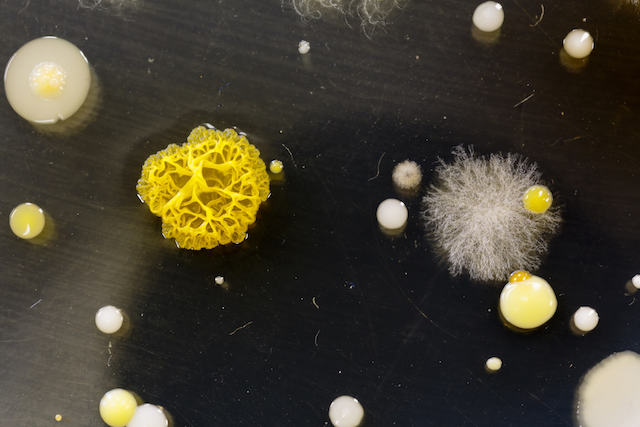
Why is it such a big deal? When mold in a waterpik pops up, it means that every time you’re working to blast away the food between your teeth or the film of whatever else is in your mouth, you’re also showering them with all sorts of microscopic contaminants.⁴ For those out there following the dentist’s recommendations of flossing at least once a day, that’s quite a high volume of foreign particles entering the body.⁵ As you can imagine, this could cause a whole list of issues for your immune system.
Learning how to prevent mold in a waterpik and what to do if any manages to sneak in is key to helping keep your body and mouth happy and healthy. Plus, the thought of flossing with mold is kind of icky, right?
How Does Mold in a Waterpik Occur?
Before getting started on steps to prevent mold in a waterpik, it’s important to know why mold in a waterpik occurs in the first place. That way, these extra steps of avoidance will make more sense, and there’ll be that extra little zest of motivation.
That Fungus Among Us
Mold is a type of fungus with over 100,000 species identified so far across the world. Each species reproduces by releasing microscopic spores into the surrounding environment.⁶’⁷ The process is similar to how a dandelion puff releases those fluffy white seeds into the air. Spores, similarly, will catch a ride to wherever that air current leads.
With the lack of discussion on mold in society, there are quite a lot of misconceptions out there, which brings us to our first debunking.
Misconception #1:
Mold is everywhere, so it’s no big deal when it’s in your home.
Sure, there are mold particles all over. But the distinction is that they’re spaced out all over the big wide world. You’ll more than likely encounter a few while driving to the grocery store, walking into work, or sitting down to eat dinner at a restaurant. The key phrase there was "a few" particles.
Now, picture mold growth in a home. When a spore finds a nice little surface to settle down on (like that water flosser), it will put down roots called hyphae, settle in for the long haul, and start to release those tiny little spores into the surrounding environment. Some species of mold can also create microscopic toxins called mycotoxins when they feel stressed, adding even more specks to the particle party.⁸
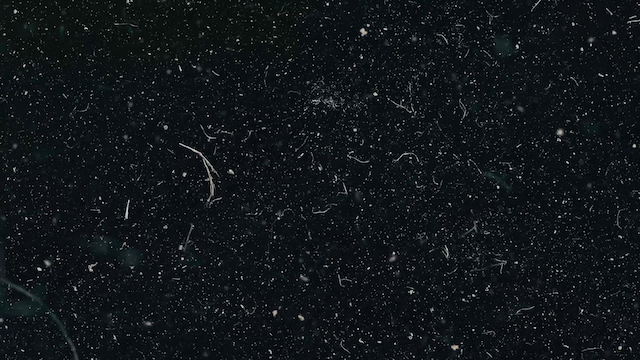
The difference between indoor and outdoor mold growth is that when it occurs inside, most of those particles remain trapped in the home. They’re not floating all over the place in nature. Why does this seem like more of a problem nowadays? Thanks to modern building techniques pushing for net-zero energy efficiency, there’s very little air flow between indoor and outdoor environments. Without additional filtering technologies installed, that means that any particle that enters the house will remain inside until actions are taken to remove them.
Reverse back to that little mold growth mentioned above. Taking this into account, all of those particles being released will then build up around the colony, float around the room with the growth, and catch a ride on the air current to other areas of the house. This causes a problem for a few reasons.
As long as the colony is thriving and surviving:
- The air quality in the home will continue to lower
- The surfaces in the home will continue to become more contaminated
- The likelihood of another colony developing elsewhere in the house rises
In a nutshell, it’s a serious health no-no, which is why actively working to prevent mold in a waterpik or anywhere else inside of a home is a stellar idea.
Why Does Mold in a Waterpik Occur?
The good news is that, like seeds, spores are nonliving particles. They will remain tiny little specks until they land on a habitable surface with the elements they need for growth. On the not-so-goo size, mold is a hardy little fungus and only needs four easy things to transition into a living organism.⁹
These four components are:
- Oxygen (they need very little, which is why they can grow inside of walls)
- Temperature (40-90°F is preferred, but some species can live in extreme temperatures, which is how mold can grow in refrigerators)
- Food (they eat pretty much everything, like skin cells, wood, and other organic matter)
- Moisture (the often missing puzzle piece)
When the stars align and all four of these are present for 24–48 hours, a mold spore will think it has won the lottery dream home and colonize. It just so happens that a water flosser often has each of these components for growth. Oxygen and temperature are given in the bathroom. Food options abound, from dust, skin cells, mineral buildup, particles from the mouth, you name it. That leaves moisture as the remaining golden nugget. With water literally in the name of the tool, it’s pretty easy to see how mold in a waterpik can occur.
If water is left in this dental hygiene item, all a spore has to do is stumble inside and boom, there’s fungal growth being blasted on your teeth. Which, is definitely not good for your health.
Is Mold in a Waterpik Dangerous? The Health Implications
The difficult thing about mold exposure is that no two people respond the same way. While one person who has mold in a waterpik might only experience a recurring sinus infection, another may develop over 30 random symptoms.
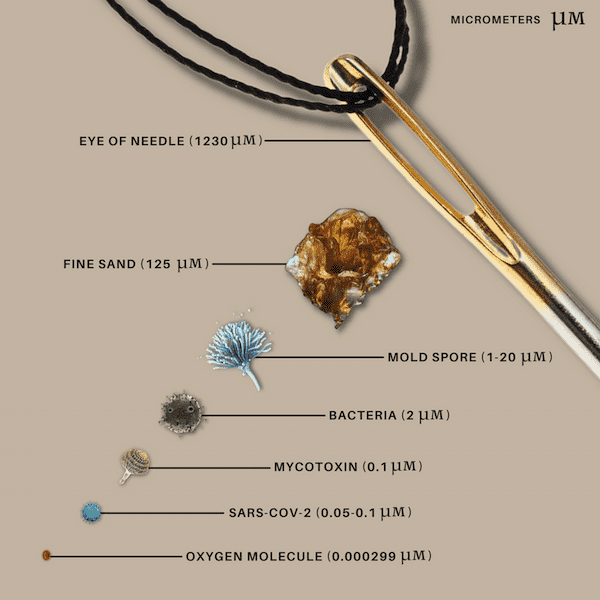
There are various components to this fungus among us that make it difficult for researchers to figure out the health implications of exposure.¹⁰’¹¹’¹²’¹³’¹⁴ Factors such as genetics, species of mold, the volume of exposure, length of exposure, presence of mycotoxins, presence of bacteria, and immune system status all play a role. What researchers do know is that individuals with compromised or developing immune systems are at greater risk of developing symptoms faster and to a greater extent.
The ability of mold to affect the body largely rests on how small the particles in question are. Measured in a unit called microns, mold spores, mycotoxins, and bacteria are all small enough to be inhaled, absorbed, and ingested. To give you a better idea, a single micron is 1/1,000 of a millimeter, which means you’d need to line up 1,000 microns to equal the length of two of the tiny lines on a ruler. As you can see, mold spores can range from anywhere from 1–20 µm, bacteria average in at 2 µm and mycotoxins come in at 0.1 µm.
These particles are so small that the EPA categorizes them as particulate matter and breaks them down into two categories, both of which are inhalable.¹⁵
These categories are:
- PM10: particles that have a diameter of around 10 micrometers or less.
- PM2.5: particles that have a diameter of around 2.5 micrometers or less.
As these particles enter the body, regardless of whether they’re toxic or not, they trigger an immune response. The body will tag them as foreign invaders, and the immune system will go into overdrive. The issue, here, is whether or not the immune system can keep up with the army of particles that come from an indoor mold growth party. Just think of how many are being introduced from flossing while there’s mold in a waterpik. Oftentimes, it can get overrun or malfunction, leading to a long list of symptoms and/or related autoimmune conditions as the toxicity level continues to build up within the body.

Some symptoms of mold exposure include:
- Coughing
- Watery eyes
- Reoccurring sinus infection
- Neurological issues
- Rashes
- Hair loss
- Digestive problems
- Chronic fatigue
- Mood swings
- Brain fog
- Respiratory issues
- Hormone imbalances
Again, you just never know how someone will respond to exposure. That’s why it’s crucial to take action to prevent mold in a waterpik so that the opportunity for chronic symptoms triggered by environmental factors does not occur.
How to Prevent Mold in a Waterpik
The best way to deal with this fungus among us is to avoid it from occurring in the first place. That means actively taking steps to prevent mold in a waterpik so that your dental health remains pristine.
One of the best ways to tackle prevention is deep cleaning the machine once a month at least, but the more often the better. Keeping the tool clean aids in the removal of potentially harmful particles such as spores, bacteria, and mycotoxins, as well as potential food sources such as organic matter and mineral buildup.It also helps ensure that the machine continues to work properly; a malfunctioning waterpik is an open door for retaining moisture and allowing for mold growth.
Tools to tackle deep cleaning include:
- White vinegar: This is a descaler, meaning it will pull particles up from a surface, and it also has antifungal and antibacterial properties.
- 8% hydrogen peroxide: This is also a descaler and has antimicrobial properties.
- Microfiber towels: These are 100 times better at removing small particles than regular rags.
- Bucket and spray bottle: To hold the cleaning solutions.
- Tiny scrubby brush: For use on hard-to-reach areas:
- Protective gear (mask and gloves): To decrease the level of exposure to any particles present on the waterpik.
Once you’ve got everything set up and ready to go, you can dive in. Make sure to double-check the manufacturer's manual for a list of what can be removed from the tool, as well as its cleaning instructions. Every machine is different, so trust the experts for this task.
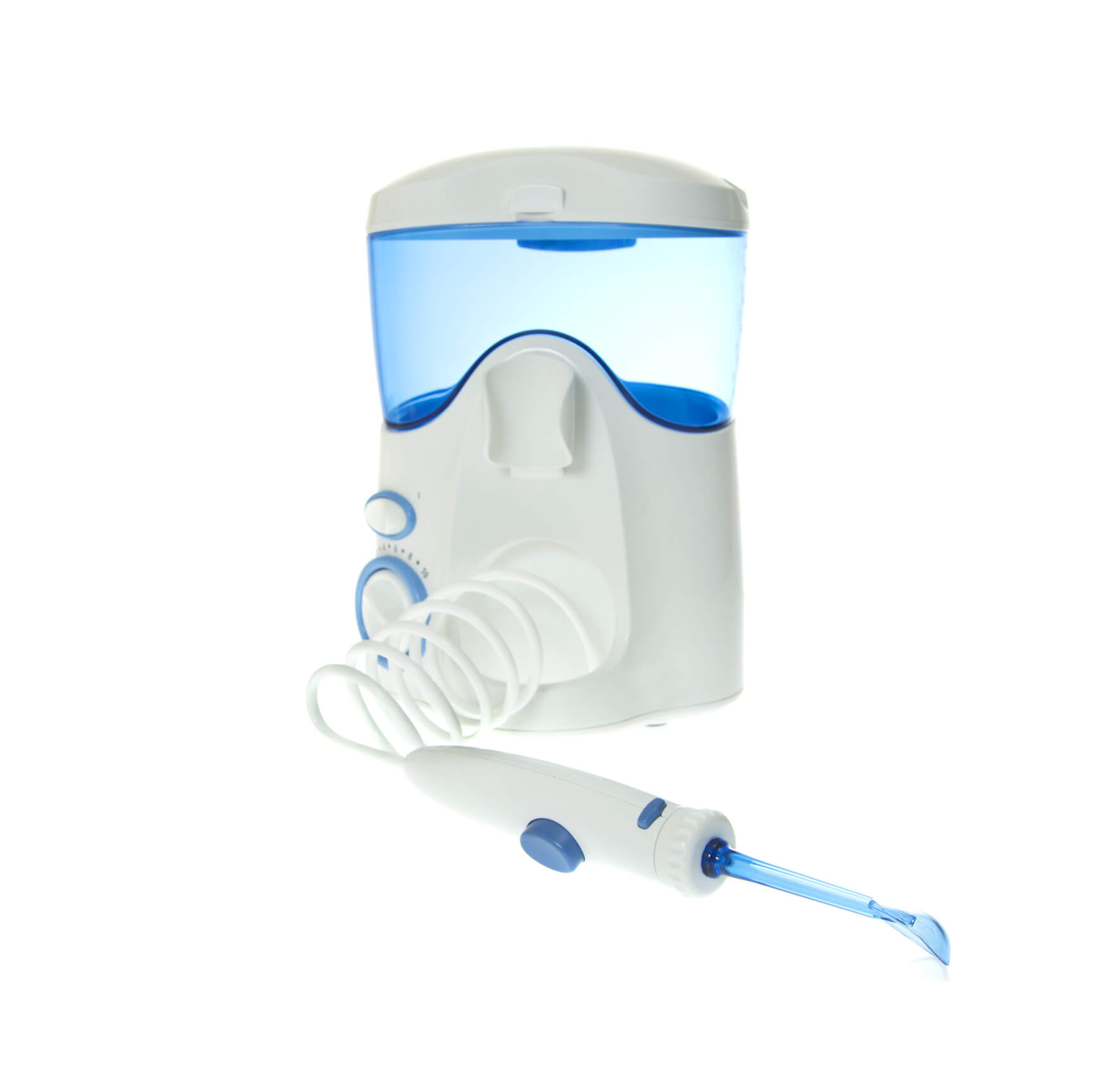
Steps to deep cleaning a waterpik include:
- Putting on protective gear: This will help protect against any particles kicked up while cleaning.
- Removing all removable parts: This includes the water reservoir, valve (if applicable), tip, and handle (for countertop models).
- Soak the reservoir, valve, and handle in white vinegar for half an hour.
- Soak the tip in white vinegar or 8% hydrogen peroxide for half an hour.
- Thoroughly wipe each part with a microfiber cloth, paying extra attention to any crack or crevice. Gently use the small scrubby brush for any hard-to-reach areas.
- Wash each part with mild soap and water and allow everything to dry completely.
- Put all the parts back in place.
- Run a mixture of warm water and a few tablespoons of white vinegar through the machine.
- Stop halfway through and allow the mixture to sit inside for half an hour before running the rest through.
- Run warm water through the machine a few times to get the remaining vinegar out.
- Take a microfiber towel and spray it with white vinegar, then gently wipe the outside down.
- Disassemble all parts and allow the entire machine to dry.
While this cleaning regime may seem thorough, it will help prevent mold in a waterpik from happening to you. The ultimate goal is to keep the machine as particle-free and dry as possible.
Other steps to prevent mold in a waterpik include:
- Keeping the indoor humidity level between 30-50 percent, even in the bathroom¹⁶
- Investing in air purification
- Soaking the tip in hydrogen peroxide at least once a week (thoroughly rinse it afterward)
- Dumping the water reservoir out after every use
- Replacing the tip on time, per the manufacturer’s instructions
- Place the handle into the sink with it pointed slightly downward so any remaining water can drain out
Adding each of these steps to your waterpik maintenance routine can help ensure you don’t blast harmful particles into your mouth while trying to fight off plaque buildup.

How to Clean Mold in a Waterpik
Unfortunately, the best way to handle mold in a waterpik is to get rid of the tool and replace it with a brand new one. For anyone who is hypersensitive to mold, this is especially important to follow.
Once the mold settles inside, all of those particles start dispersing throughout the tool. You can attempt to decontaminate it and remove those harmful particles, but thanks to their small size, it’s almost impossible to ensure they’re all eliminated. Mycotoxins and bacteria are particularly difficult to remove once they have stuck to a surface.
Any particle left behind, whether it be mold, mycotoxins, or bacteria, means that exposure continues and any adverse health reactions will persist. That’s why it’s best to start fresh with a waterpik that isn’t steeped in contamination.
For those not in a position to replace their waterpik, you can attempt to deep clean using the steps above, but complete the process at least three times and remove as many particles as possible. If that mold comes right back or symptoms continue, that contamination is more than likely still present in the machine, and it’s time to throw it in the garbage.
Again, though, it’s best to err on the side of caution and just go ahead and toss it. When it comes to your health, going above and beyond is always worth the investment.
How Do You Know If You Have Mold in a Waterpik?
If you’re not giving your dental hygiene tool the side-eye, you’re probably wondering how to tell if mold in a waterpik is a problem for you. The best way to figure out if there’s an issue is to use sight, smell, and feeling.
Do You See Visible Growth?
With over 100,000 species of mold out there, any visible growth can appear in a multitude of colors, shapes, and textures. That means that any visible abnormalities should be considered a problem.
That being said, common colors of mold include green, grey, brown, black, white, yellow, red, or any mixture of these hues. As for textures, growth could appear slimy, velvety, powdery, fluffy, or any combination of these consistencies.
Make sure to check the cracks, crevices, and hard-to-see areas as well, since mold can grow pretty much anywhere.

Do You Smell Something Funky?
Mold growth is tricky, which means that it isn’t always visible. There could be growth in hidden areas of the machine, or the colony itself is young and too small to be visible to the naked eye. When this occurs, you need to use your nose to help determine if there’s a problem.
Actively rowing mold often creates a musty, earthy, damp smell as it releases gases called microbial volatile organic compounds (MVOC).¹⁷ If this odor is coming from the waterpik, it points to an invisible problem existing inside.
Do You Feel Off?
No visible issues or smells? That still doesn’t mean you’re in the clear because not all mold growth is detectable or creates a stinky smell. In these cases, pay attention to how you feel when around the tool or after using it. If chronic symptoms seem to spark up out of the blue or become worse over time, particularly after being around the device, and no doctor can pinpoint a problem, exposure to mold in a waterpik might be the root cause.
Our bodies are incredible warning systems that will alert us if something’s wrong, including if there’s a contaminant in our indoor environments. It’s up to us to listen to these signals and figure out what the root cause is so that it can be eliminated.
If you spot any of these contamination indicators, it’s time to replace that waterpik.
A Healthy, Happy, Mold-Free Dental Routine
Mold in a waterpik is something no one wants to deal with, and it’s definitely not what the dentists and oral hygienists recommended when they said to up your flossing game.
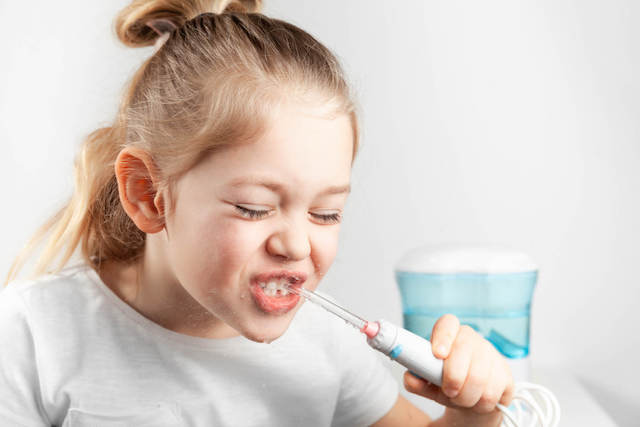
Not only is it bad for your health and can lead to other moldy problems developing elsewhere in the home, but it’s also super high on the icky scale. Just think of all of those little contaminants swishing through your mouth, sliding between your teeth, and making their way into your body.
That’s not ideal or sanitary, to say the least! Learning how mold in a waterpik occurs and how to prevent it can go a long way towards ensuring your dental routine is beneficial and not a particle-filled mouth bomb. Remembering to floss your teeth is hard enough. No need for mold to join the party.
Health begins at home. ™
Citations:
- Department of Scientific Information, Evidence Synthesis & Translation Research, ADA Science & Research Institute, LLC. (2021, September 21). Floss/interdental cleaners. American Dental Association. Retrieved April 21, 2022, from https://www.ada.org/resources/research/science-and-research-institute/oral-health-topics/floss.
- Goyal, C. R., Lyle, D. M., Qaqish, J. G., & Schuller, R. (2013). Evaluation of the plaque removal efficacy of a water flosser compared to string floss in adults after a single use. The Journal of clinical dentistry, 24(2), 37-42.
- Lyle, D. M., Goyal, C. R., Qaqish, J. G., & Schuller, R. (2016). Comparison of Water Flosser and Interdental Brush on Plaque Removal: A Single-Use Pilot Study. The Journal of clinical dentistry, 27(1), 23-26.
- Warren PR, Chater BV. An overview of established interdental cleaning methods. J Clin Dent 1996;7(3 Spec No):65-9.
- Sicilia A, Arregui I, Gallego M, Cabezas B, Cuesta S. Home oral hygiene revisited. Options and evidence. Oral Health Prev Dent 2003;1 Suppl 1:407-22; discussion 23-5.
- Environmental Protection Agency. (n.d.). Mold. EPA. Retrieved from https://www.epa.gov/mold.
- Centers for Disease Control and Prevention. Basic facts about mold and dampness. Centers for Disease Control and Prevention. Retrieved from https://www.cdc.gov/mold/faqs.htm.
- Lstiburek, J., Brennan, T., & Yost, N. (2002, January 15). Rr-0208: What you need to know about mold. Building Science Corporation. Retrieved from, https://www.buildingscience.com/documents/reports/rr-0208-what-you-need-to-know-about-mold/view.
- World Health Organization. (n.d.). Mycotoxins. World Health Organization. Retrieved from https://www.who.int/news-room/fact-sheets/detail/mycotoxins.
- EPA. (n.d.). Health and Environmental Effects of Particulate Matter (PM). EPA. Retrieved from https://www.epa.gov/pm-pollution/health-and-environmental-effects-particulate-matter-pm.
- Environmental and Occupational Health Assessment Program, & Environmental and Occupational Health Assessment Program, & Health Science Section, Mold Basics for Primary Care Clinicians (2009). Hartford, CT; Connecticut Department of Public Health. , H. S. S., Mold Basics for Primary Care Clinicians 1–10 (2009). Hartford, CT; Connecticut Department of Public Health.
- Curtis, L., Lieberman, A., Stark, M., Rea, W., & Vetter, M. (2004). Adverse health effects of indoor molds. Journal of Nutritional & Environmental Medicine, 14(3), 261-274.
- Bush, R. K., Portnoy, J. M., Saxon, A., Terr, A. I., & Wood, R. A. (2006). The medical effects of mold exposure. Journal of Allergy and Clinical Immunology, 117(2), 326-333
- Fisk, W. J., Lei-Gomez, Q., & Mendell, M. J. (2007). Meta-analyses of the associations of respiratory health effects with dampness and mold in homes. Indoor air, 17(4), 284-296.
- Wild, C. P., & Gong, Y. Y. (2010). Mycotoxins and human disease: a largely ignored global health issue. Carcinogenesis, 31(1), 71-82.
- EPA. (n.d.). A Brief Guide to Mold, Moisture, and Your Home. EPA. Retrieved from https://www.epa.gov/mold/brief-guide-mold-moisture-and-your-home#tab-6.
- Environmental Protection Agency. (n.d.). What does mold smell like? EPA. Retrieved from https://www.epa.gov/mold/what-does-mold-smell.
Still Have Questions?
A member of our team is here to help! Click on “Get Started ➤” below to book a consultation with a member of the HOMECLEANSE team. We have a few quick questions that will help us put together a roadmap to solve or prevent all of your mold problems.
Two minutes of your time could lead to better health for you and your family.
